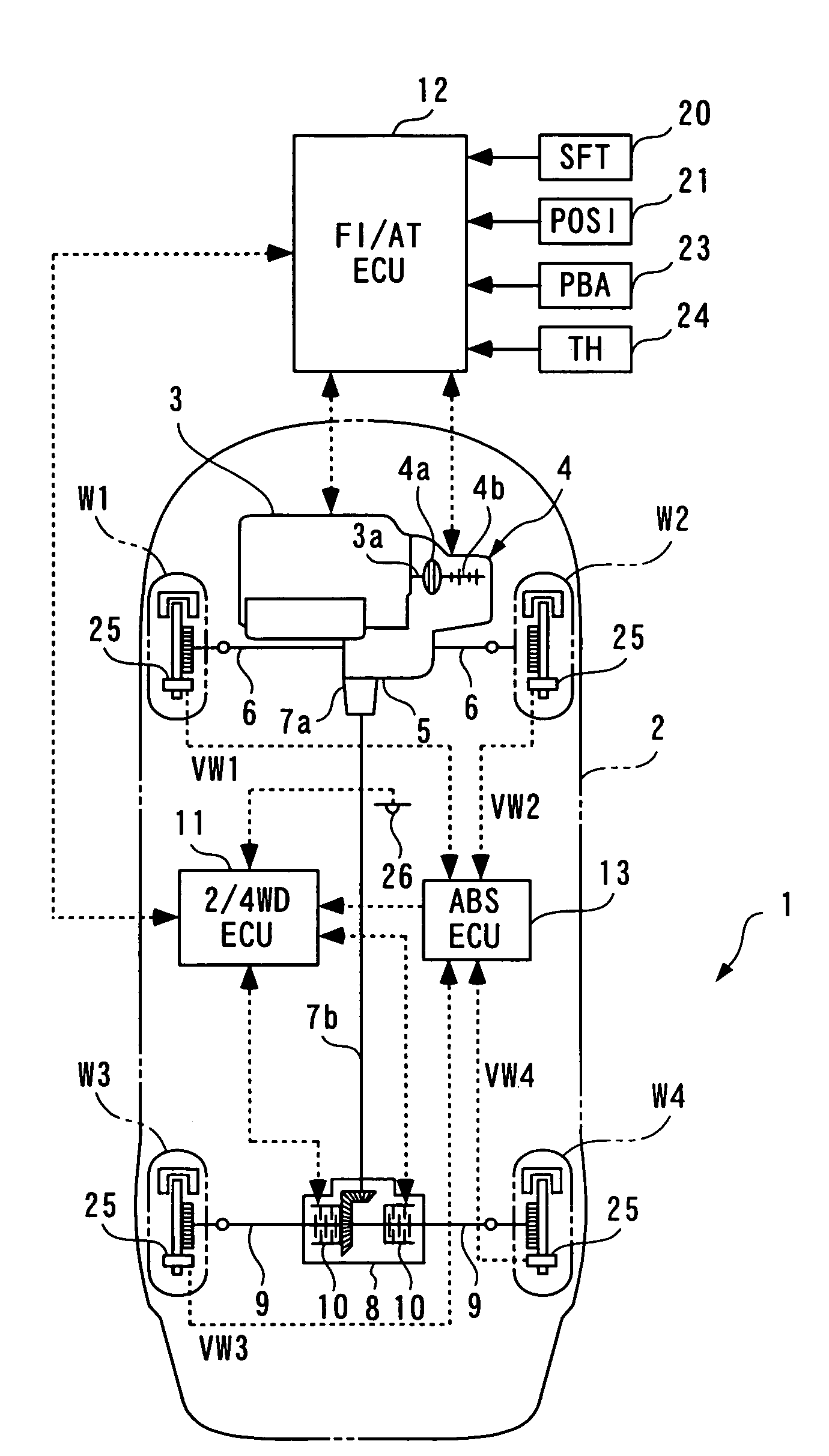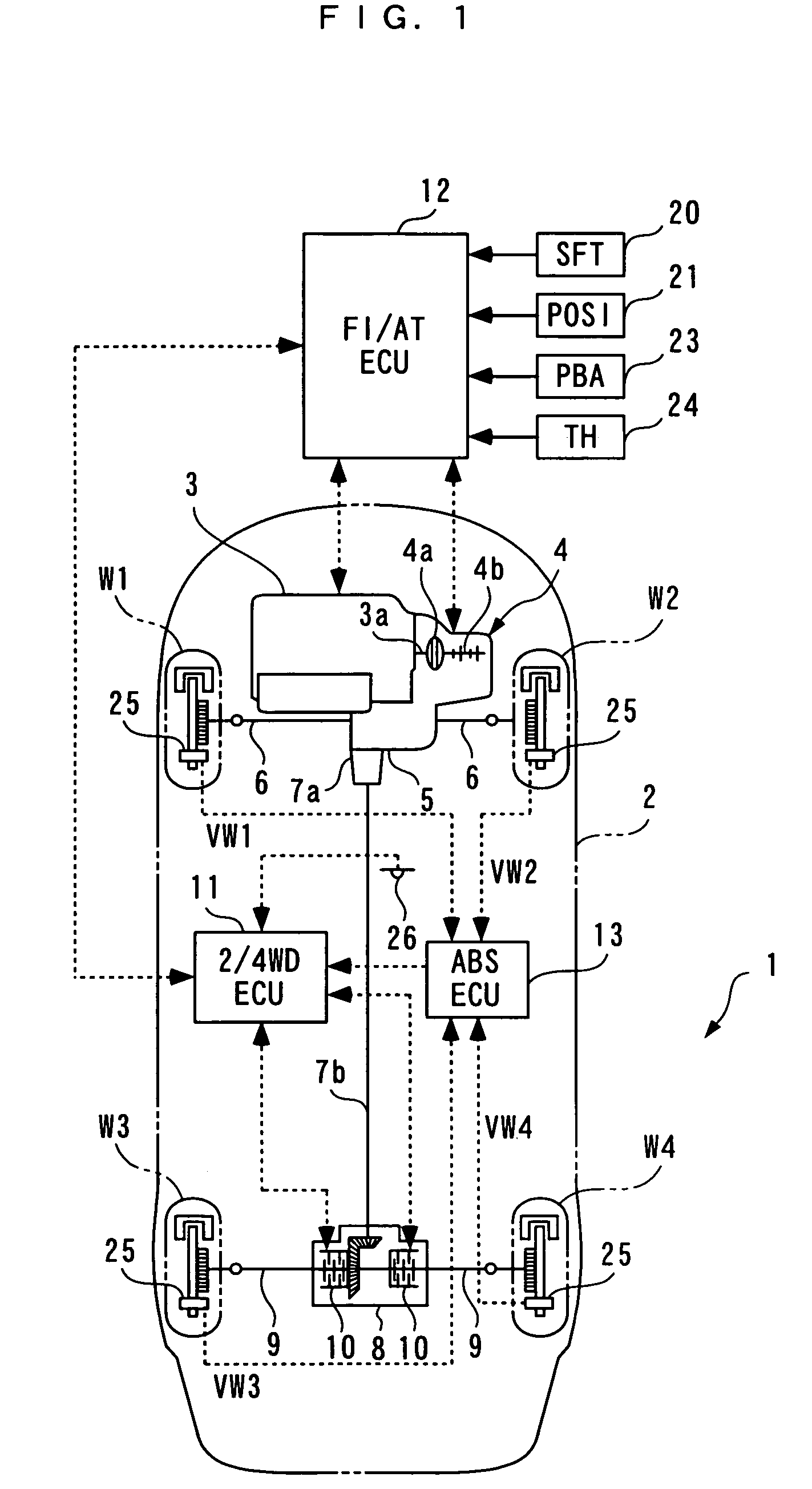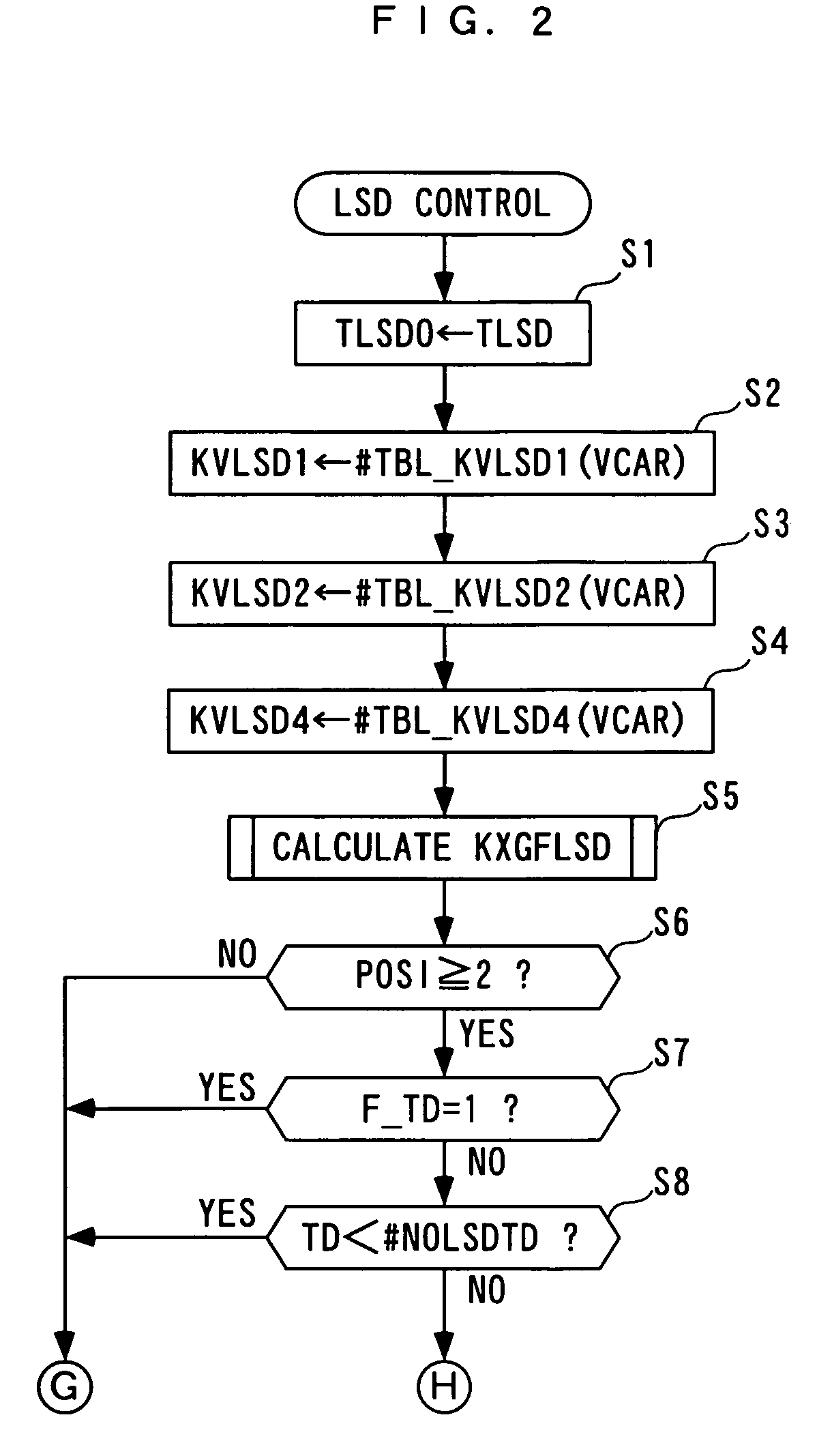Driving force control apparatus for four-wheel drive vehicle
a technology of driving force control and four-wheel drive, which is applied in the direction of process and machine control, braking systems, instruments, etc., can solve the problems of vehicle not being stably launched on a level road, vehicle failure to stably launch, and vehicle failure to achieve stable launch, so as to prevent control from hunting
- Summary
- Abstract
- Description
- Claims
- Application Information
AI Technical Summary
Benefits of technology
Problems solved by technology
Method used
Image
Examples
Embodiment Construction
[0037]In the following, an embodiment of the present invention will be described in detail with reference to the accompanying drawings. FIG. 1 generally illustrates the configuration of a driving force control apparatus 1 according to one embodiment, and a four-wheel drive vehicle 2 to which the driving force control apparatus 1 is applied. As illustrated, the four-wheel drive vehicle (hereinafter simply called the “vehicle”) 2 comprises an engine 3 mounted sideways in a front region thereof (prime mover), and an automatic transmission 4 arranged integrally with the engine 3.
[0038]The automatic transmission 4 comprises a torque converter 4a coupled to an output shaft 3a of the engine 3; a shift lever (not shown) for selecting one shift position from eight shift positions consisting of 1, 2, 3, D4, D5, N, P, R; and a gear mechanism 4b (only part of which is shown) which can be switched among gear positions corresponding to six transmission ratios consisting of a first to a fifth spee...
PUM
 Login to View More
Login to View More Abstract
Description
Claims
Application Information
 Login to View More
Login to View More - R&D
- Intellectual Property
- Life Sciences
- Materials
- Tech Scout
- Unparalleled Data Quality
- Higher Quality Content
- 60% Fewer Hallucinations
Browse by: Latest US Patents, China's latest patents, Technical Efficacy Thesaurus, Application Domain, Technology Topic, Popular Technical Reports.
© 2025 PatSnap. All rights reserved.Legal|Privacy policy|Modern Slavery Act Transparency Statement|Sitemap|About US| Contact US: help@patsnap.com



